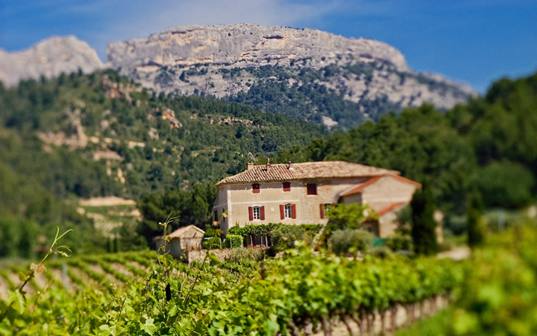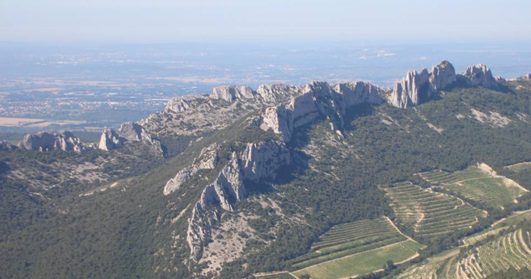We recently attended a trade show for the wine industry, which happened to be dominated by wines from France. Among them was a kiosk for Beaumes de Venise, which is a small, centrally located village in the Southern Rhône region. Tasting the wines from there brought back quite a few memories.
Beaumes de Venise a nice village but no more so than its neighboring villages, Vacqueyras and Gigondas. Red wines are made there, good ones but again no better than others made nearby. What distinguishes Beaumes de Venise is the luscious honey-flavored wine made there from the Muscat grape (or to be more specific, the Muscat de Frontignan).
[A few words on the name of the village. Literally, it means “Balm of Venice”, but there is nothing about either balm or Venice in the origin of the name. Beaumes comes from the Provençal word for caves, “baumo” plus the name of the county, many centuries ago, “Venaissin”. The caves of Venaissin became the “Balm of Venice” over the years.]
For many years, American wine lists were rather sparse when it came to dessert wines, and they still are. One that was featured the most frequently back then was the rather light but fruity Muscat from Domaine de Durban. So the first time we visited Beaumes de Venise we made a point of visiting that winery. It’s a drive from the center of the village, up a narrow, windy road to the top of what seemed like a mountain to us. After all that, we discovered that, like all French enterprises, Durban was closed for a two-hour lunch. We never did get to taste their wine on the premises.
The Domaine des Bernardins. Photo courtesy of Ventoux Provence.
Some years later, we were vacationing in Provence and we had a fancy dinner in the especially charming town of St. Remy. We ordered foie gras as a starter and asked the waiter for the usual accompaniment, glasses of Sauternes. As only a French waiter could, he told us “Non!”. Startled, we asked why not. He told us that in this region of France the wine of choice with foie gras was Beaumes de Venise and recommended one in particular, Domaine des Bernardins. (He did say that if we were dissatisfied he’d find us a glass of Sauternes.)
Not only were we satisfied, we were blown away. We loved it so much that we drove to Beaumes de Venise the next morning, located the winery and bought a case to be shipped home.
Our Provençal friends drink Beaumes de Venise as an aperitif which is rather enjoyable sipping it under a chestnul tree or in front of the fireplace. “Un petit Beaumes” as our friend Catherine would say. Of course, you can drink it with (or as) dessert, too.
A word to the uninitiated. Domaine des Bernardins, like many dessert wines, has a lovely golden color and is fresh with good acidity when it is young. Over time, it turns brown and has a more profound flavor. Keep it too long (a decade or so) and it just deteriorates.
The Dentelles de Montmirail. Photo courtesy of Provence Guide.
One feature of Beaumes de Venise that you cannot fail to see if you visit the village: the Dentelles de Montmirail hover over the vineyards. These are a row of jagged rock mountains that form a wall to the east of the Rhône valley. They reflect the afternoon sun and give the grapes below an extra dose of warmth. This is especially useful for grapes with a high sugar content, such as Muscat.
They have been making sweet wines here for millennia, and if climate change doesn’t mess up everything, they will continue to do so for centuries to come.

